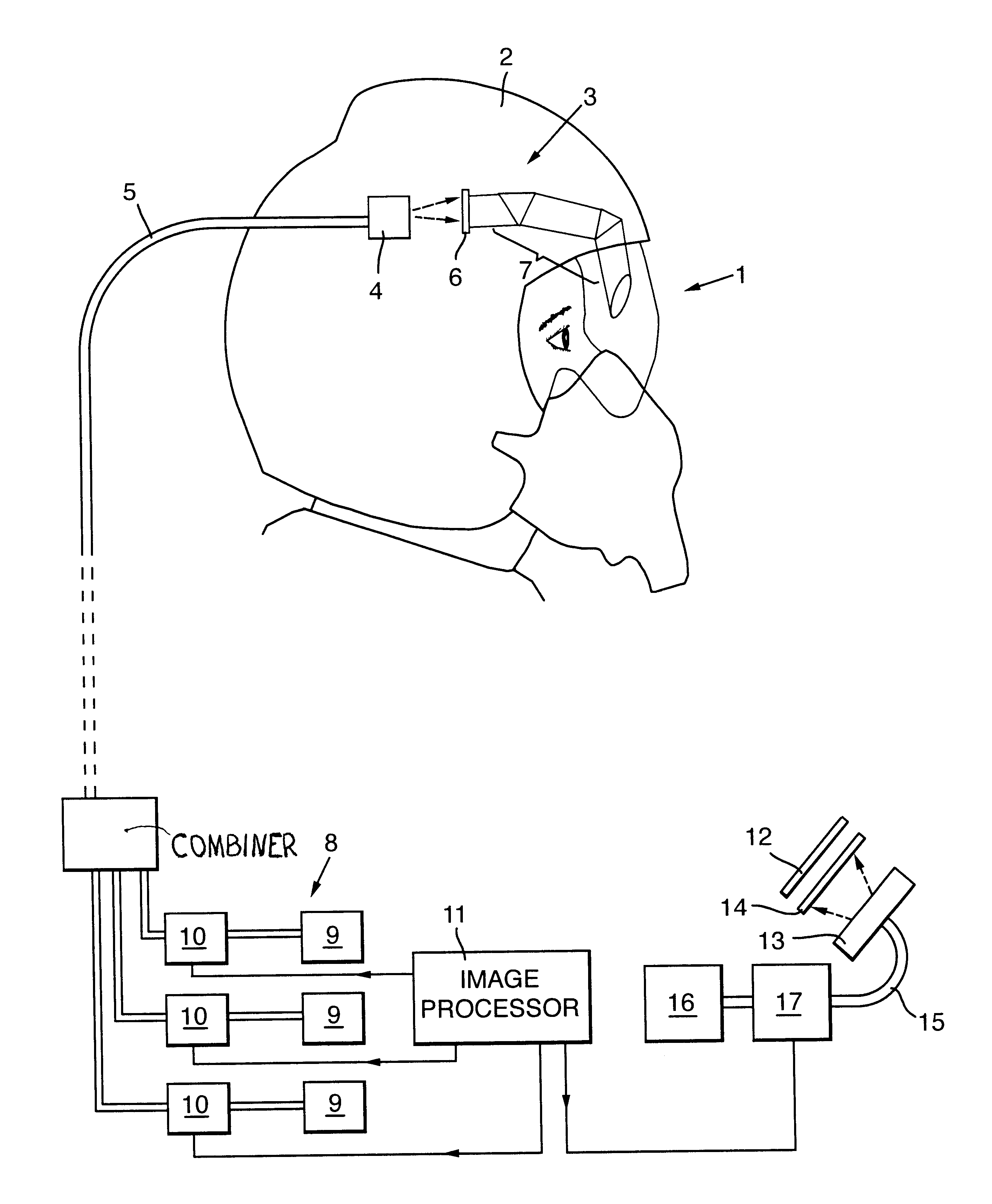Display arrangements
a display and display technology, applied in the field of display arrangements, can solve the problems of large design effort, relatively large and unwieldy umbilical cords, and generally quite complex relay optics
- Summary
- Abstract
- Description
- Claims
- Application Information
AI Technical Summary
Benefits of technology
Problems solved by technology
Method used
Image
Examples
Embodiment Construction
With reference to the FIGURE, an aircraft pilot 1 wears a helmet 2 on which is mounted a display arrangement shown generally at 3 which is arranged to present an image to him on a visor or combiner.
The display arrangement 3 includes an acousto-optical scanner 4 for scanning a light beam transmitted to it via an optical fibre bundle 5 across a screen 6 which interfaces with relay optics 7 to transmit the image produced at the screen 6 into the pilot's field of view. The optical fibre bundle 5 is connected at its other end, remote from the helmet 2, to a light source 8 comprising a plurality of lasers 9 having outputs at respective different wavelengths and a plurality of modulators 10 associated with respective ones of the lasers 9.
An image processor 11 is connected to the modulators 10 to control the outputs of the light source 8, the light beams being combined following modulation and transmitted along the optical fibre 5 to the scanner 4. The scanner 4 causes the modulated light b...
PUM
 Login to View More
Login to View More Abstract
Description
Claims
Application Information
 Login to View More
Login to View More - R&D
- Intellectual Property
- Life Sciences
- Materials
- Tech Scout
- Unparalleled Data Quality
- Higher Quality Content
- 60% Fewer Hallucinations
Browse by: Latest US Patents, China's latest patents, Technical Efficacy Thesaurus, Application Domain, Technology Topic, Popular Technical Reports.
© 2025 PatSnap. All rights reserved.Legal|Privacy policy|Modern Slavery Act Transparency Statement|Sitemap|About US| Contact US: help@patsnap.com


